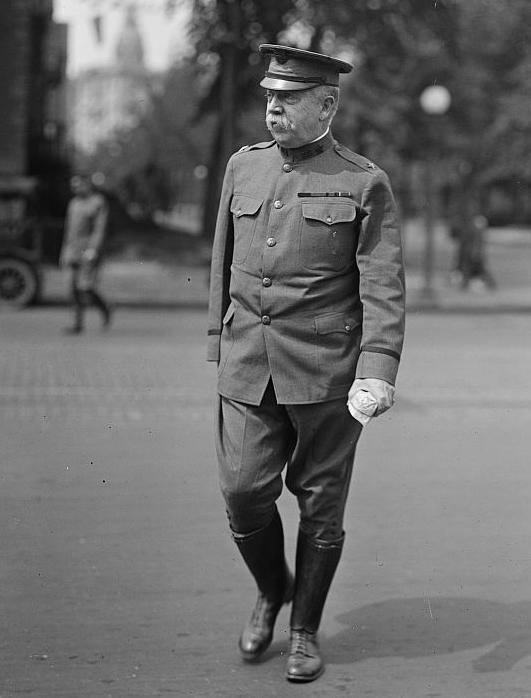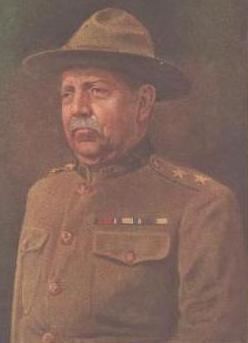Years of service 1875–1918 | Name William Mann | |
 | ||
Born July 31, 1854Altoona, Pennsylvania ( 1854-07-31 ) Allegiance United States of America Commands held 6th Infantry RegimentDepartment of DakotaRecruit Depot, Jefferson Barracks, Missouri3rd Infantry Regiment1st Brigade, Department of the East2nd Cavalry BrigadeSchool of Musketry and Field ArtilleryMilitia Bureau42nd Infantry DivisionDepartment of the East Battles/wars American Indian WarsSpanish–American WarPancho Villa ExpeditionWorld War I Other work Executive, Equitable Trust Company of New York Died October 8, 1934, Washington, D.C., United States Battles and wars | ||
William Abram Mann (July 31, 1854 – October 8, 1934) was a general officer in the United States Army. He served as the commander of the 17th Infantry Brigade in the Spanish–American War of 1898 and the commander of the 42nd Infantry Division ("The Rainbow Division") in World War I.
Contents
- Early life and start of military career
- SpanishAmerican War
- Post SpanishAmerican War
- World War I
- Post military career
- Retirement and death
- Awards
- Legacy
- References

After he retired from military service, he became an executive at Equitable Trust Company of New York. He resided in Washington D.C., until his death on October 8, 1934. He had a troop carrier (AP-112) named after him, that was commissioned in 1943 and served in World War II, the Korean War, and the Vietnam War.
Early life and start of military career
Mann was born on July 31, 1854, in Altoona, Pennsylvania and graduated from the United States Military Academy at West Point in 1875, receiving a commission as a Second Lieutenant of Infantry.
He served in the western United States throughout the 1870 and 1880s, mostly in assignments with the 7th Cavalry. As part of the 17th Infantry Regiment, he took part in the Sioux Indian campaign of 1890 to 1891.
Spanish–American War
Mann served with the 17th Infantry Regiment in the Spanish–American War, participating in the Battle of El Caney and the Siege of Santiago. He received a Silver Star for gallantry in action at El Caney. Mann also served in the Philippines in 1899 and the early 1900s. He graduated from the Army War College in 1905.
Post Spanish–American War
From 1907 to 1909 Mann commanded the 6th Infantry Regiment at Fort William Henry Harrison, Montana, also temporarily commanding the Department of Dakota on several occasions. From 1910 to 1911 he commanded the Recruit Depot, at Jefferson Barracks, Missouri.
In 1911 he was assigned to the Army's General Staff, and from 1912 to 1913 he was Chief of Staff for the Eastern Department in New York City. He served as Chief of Staff for the division based in Texas City, Texas from 1913 to 1914.
From 1914 to 1915 Mann commanded the 3rd Infantry Regiment at Madison Barracks, New York, and in 1915 he was assigned as commander of 1st Brigade, Department of the East in Albany, New York, receiving promotion to Brigadier General.
In 1916 General Mann assumed command of the 2nd Cavalry Brigade in Texas during the Pancho Villa Expedition, and later took command of the School of Musketry and Field Artillery at Fort Sill, Oklahoma.
In 1917 he was named to head the Army's Militia Bureau (now the National Guard Bureau), receiving promotion to Major General.
World War I
General Mann left the Militia Bureau and was succeeded by Jesse McI. Carter. Mann became the first commander of the 42nd Infantry Division, nicknamed the Rainbow Division, which was composed of National Guard units from 26 states and the District of Columbia. The 42nd Division's activation was important because it was the first time National Guard units from multiple states were organized together and it was the first time smaller Guard units were formed into divisions.
Mann led the Rainbow Division to France, but did not pass his physical exam, and so was not able to command the organization in combat. He then returned to the U.S. and commanded the Department of the East until he reached mandatory retirement age in late 1918.
Post-military career
After leaving the military Mann became an executive at Equitable Trust Company of New York.
Retirement and death
In retirement Mann resided in Washington, D.C., and he died there on October 8, 1934. He was buried at Arlington National Cemetery, Section 3, Site 1996.
Awards
Legacy
The USS General W. A. Mann (AP-112), a World War II troop carrier, was named for him. The General Mann was commissioned in 1943, used in World War II, the Korean War and the Vietnam War, and remained in service until 1965.
